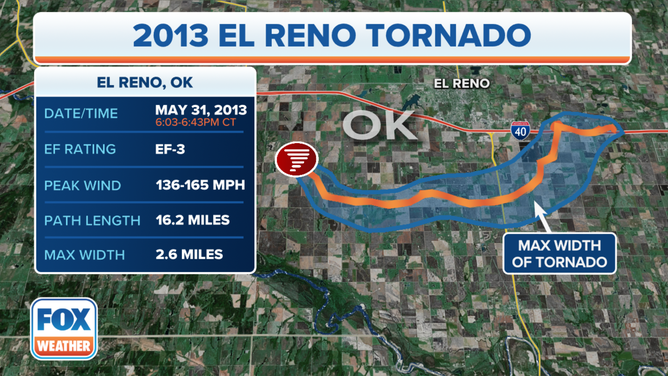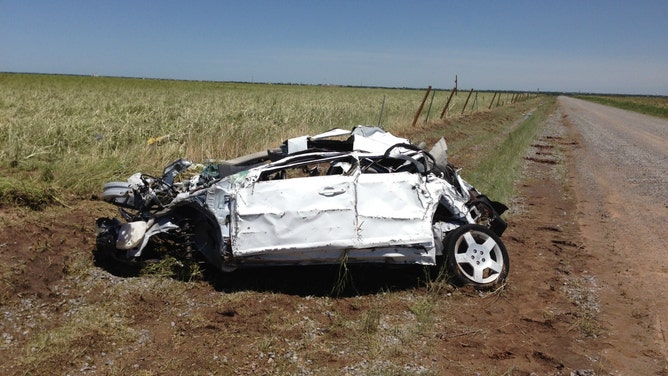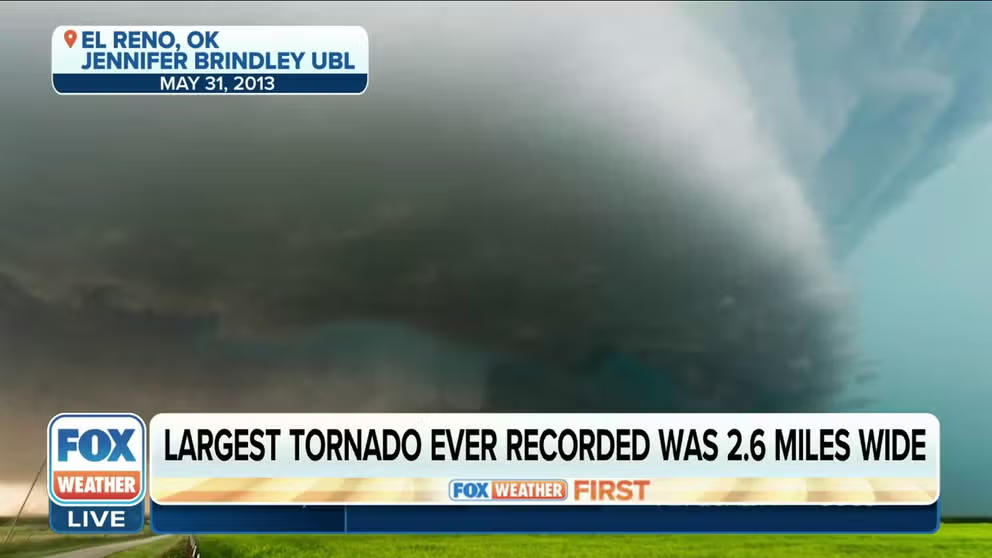10 years since 3 storm chasers killed in El Reno tornado: 'The day storm chasing lost its innocence'
An EF-3 tornado ripped through the Oklahoma City suburb of El Reno on May 31, 2013, killing eight people, including three noted storm researchers Tim Samaras, his son Paul and their colleague Carl Young, who were out chasing the storms.
Remembering the 2013 deadly El Reno, Oklahoma tornado
Wednesday marks the 10-year anniversary of the tornado that tore through the El Reno, Oklahoma area, killing eight people, including three storm chasers that were caught in the tornado's erratic path.
EL RENO, Okla. – Wednesday marked 10 years since a devastating EF-3 tornado ripped through the Oklahoma City suburb of El Reno, killing eight people, including three noted storm researchers who were chasing the storms.
What made this tornado so deadly was its massive size and intensity and its erratic movements, which featured several shifts in direction and speed over its nearly 40-minute lifespan.
The tornado startled and trapped dozens of storm chasers as it rapidly grew in size, eventually expanding to an incredible 2.6 miles wide – the widest tornado ever tracked, according to the National Weather Service. Meanwhile, the tornado first moved southeast, then abruptly turned north before undergoing a loop in its path, then resumed an easterly course. Observers say the supercell even developed two satellite tornadoes on the main funnel's western flank.

(FOX Weather)
SHAWNEE, OKLAHOMA, TORNADO FEATURES 2 RARE METEOROLOGICAL PHENOMENA
The three storm researchers, Tim Samaras (56), his 25-year-old son Paul Samaras and their 45-year-old colleague Carl Young, were caught in the tornado's path when it made the sudden and unexpected shift in track. It would be the first tornado to claim the lives of storm chasers.
"(Their deaths were) super impactful to the whole storm chasing community," storm chaser Skip Talbot told FOX Weather Wednesday. "This was the day that storm chasing lost its innocence, really."
‘About 90 seconds from impact’
Talbot said he and his chasing partner were nearly caught by the tornado themselves.
"When we were in front of this storm, we could see a funnel cloud several miles back in the distance buried back within the core of this high-precipitation supercell," he said. "And I thought we were OK because I had a fix on this funnel cloud and it appeared to be a ways off."
THIS IS WHAT YOU SHOULD DO IF YOU ARE DRIVING AND THERE IS A TORNADO ON THE GROUND
But it turned out danger was much closer at hand.
"My storm-chasing partner Jennifer (Brindley), however, noted that the rain immediately in front of us was moving at the speed of a tornado. And this rain was covering an area several miles across, and we realized that the winds in this vortex were much, much larger than we had anticipated," Talbot said. "So, we just had to immediately drop everything and flee east. We had no idea how much trouble we were in at the moment. There was a fatality on the road behind us, and we were about 90 seconds from impact ourselves."
Two other research teams managed to get a close-up scan of the tornado, registering peak winds inside the twister at 296 mph – far beyond what would cause EF-5-level damage, though thankfully, those winds were measured over rural fields and not present as the storm moved into populated areas. Peak damage from the storm registered wind speeds consistent with an EF-3 rating.
HOW ARE TORNADOES RATED? THE ENHANCED FUJITA SCALE EXPLAINED
‘They were just inspirational role-model figures’
Talbot has since dedicated efforts to helping the storm-chasing community learn the lessons from that deadly, erratic twister.
"We realized (after that storm) we had a lot of problems in the community," Talbot said. "We realized that people were making really bad mistakes in their positioning, and they were picking really bad escape routes. And after that, we realized we needed to make a change and find better ways to chase these storms."
THIS IS THE LIFECYCLE OF A TORNADO
Meanwhile, a roadside memorial sits near U.S. Highway 81 where the three storm researchers were killed.

This photo shows a heavily damaged white Chevy Cobalt near the intersection of Reuter Road and S. Radio Road, or 4.8 miles southeast of El Reno, OK. Three storm chasers were killed when this vehicle was hit by one of sub-vortices within the larger circulation of the "El Reno" tornado.
(National Weather Service / NOAA)
"They were just inspirational role-model figures for us. It was devastating when we lost them," Talbot said. "They were so outgoing and compassionate. They would always take the time to talk to you and to listen to you even though they were legends in the field. They were some of the most respected and experienced chasers out there and that (if) this could happen to them – that was really the reason why we all came together to figure out what went wrong and what we can do to avoid tragedy like this in the future."
Five other people would die in their vehicles when they became trapped inside the storm's path, according to the NWS. Three were killed while attempting to escape the tornado near Highway 81, while two others died on Interstate 40 waiting for the storm to pass.











